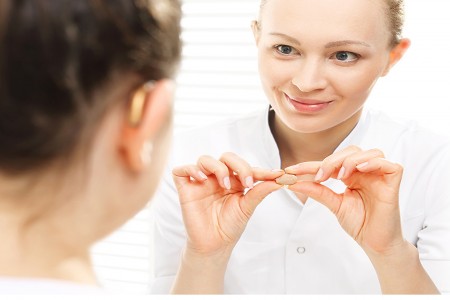
How to Safely Clean Your Ears at Home
Cleaning your ears is important for maintaining ear health and preventing issues like earwax buildup and infections. However, it’s crucial to do so safely to avoid damaging your ears or pushing wax deeper into the ear canal. Here’s a step-by-step guide on how to safely clean your ears at home:
1. Understand Earwax Functions
Before cleaning, it's important to know that earwax (cerumen) is a natural substance produced by the body to protect the ear canal. It helps trap dust, debris, and microorganisms, and usually, it works its way out of the ear naturally. Over-cleaning can disrupt this process and cause problems.
2. Avoid Inserting Objects
Never insert objects like cotton swabs, hairpins, or pencils into your ear canal. These items can push earwax further in, damage the delicate skin inside your ear, or cause infections.
3. Use Ear Drops
Over-the-counter ear drops can help soften and break down earwax, making it easier for your ears to clear it naturally. Follow these steps:
Purchase Ear Drops: Choose a product designed to soften earwax (e.g., hydrogen peroxide or mineral oil-based drops).
Administer Drops: Tilt your head to the side, place a few drops into your ear canal, and keep your head tilted for a few minutes to allow the drops to work.
Drain and Dry: After using the drops, tilt your head over a sink or towel to allow the softened wax and drops to drain out. Gently dry the outer ear with a clean towel.\
4. Gently Clean the Outer Ear
Cleaning the outer part of your ear can help remove debris and excess earwax:
Use a Damp Cloth: Moisten a clean washcloth or cotton ball with warm water.
Wipe the Outer Ear: Gently wipe the outer ear and the area around the ear canal. Avoid inserting the cloth into the ear canal.
5. Use a Bulb Syringe
A bulb syringe can be used to gently flush out excess earwax:
Fill with Warm Water: Use lukewarm water to fill the bulb syringe.
Flush Gently: Tilt your head over a sink and gently squeeze the bulb to allow the water to flow into your ear canal. Let the water drain out by tilting your head in the opposite direction.
Dry Your Ear: Use a clean towel to gently dry the outer ear.
6. Avoid Using Harsh Cleaning Agents
Do not use harsh cleaning agents like alcohol, hydrogen peroxide, or vinegar directly in your ear canal without proper guidance. These substances can irritate the sensitive skin inside your ear.
7. Maintain Ear Hygiene
Regular ear hygiene can help prevent excessive earwax buildup:
Clean Ears Regularly: Incorporate gentle ear cleaning into your routine, but avoid over-cleaning.
Stay Dry: Keep your ears dry and avoid getting water trapped in your ear canal.
8. Monitor for Symptoms
Be aware of signs that might indicate a need for medical attention:
Persistent Ear Pain: If you experience ongoing ear pain, discomfort, or itching, consult a healthcare professional.
Hearing Loss: If you notice sudden or gradual hearing loss, seek medical advice.
Unusual Discharge: Any unusual discharge or bleeding from the ear should be evaluated by a doctor.
9. Consult a Professional
If you have persistent earwax buildup, discomfort, or if you’re unsure about cleaning your ears safely, consult a healthcare professional or audiologist. They can provide safe and effective ear cleaning and evaluate any underlying issues.
Safe ear cleaning practices are essential for maintaining ear health and preventing complications. By following these guidelines—avoiding the insertion of objects, using ear drops, cleaning the outer ear gently, and seeking professional help when needed—you can keep your ears healthy and prevent problems associated with earwax buildup. Remember, when in doubt or if you experience any symptoms, it’s best to consult a healthcare professional.